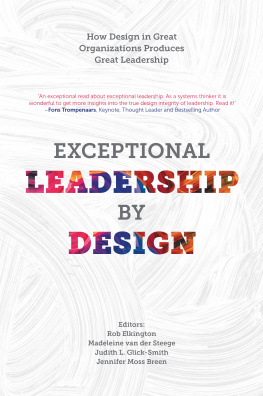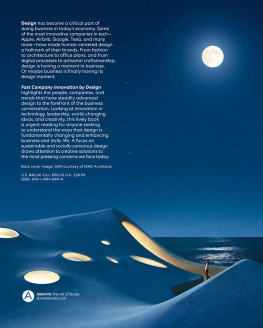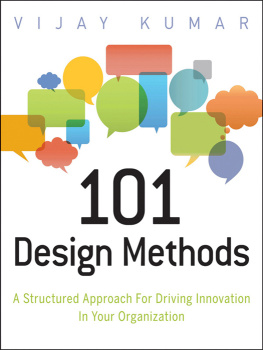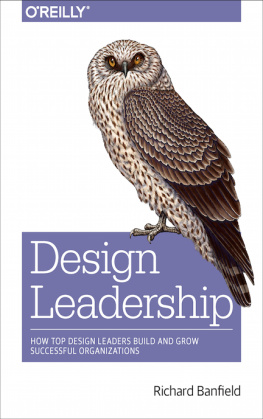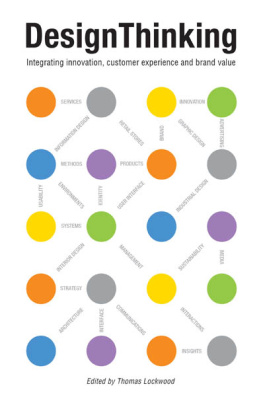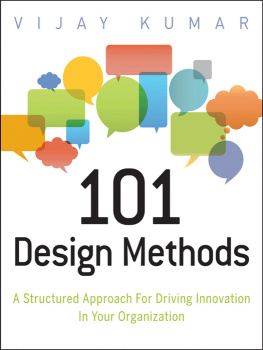Sketching User Experiences
Getting the design right and the right design
Bill Buxton
Morgan Kaufmann
Copyright
Publisher: Diane Cerra
Publishing Services Manager: George Morrison
Senior Project Manager: Brandy Lilly
Editorial Assistant: Asma Palmeiro
Copyeditor: Adrienne Rebello
Indexer: Distributech Scientific Indexing
Interior printer: Transcontinental Interglobe
Cover printer: Transcontinental Interglobe
Book Design: Henry Hong-Yiu Cheung
Information Graphics: Henry Hong-Yiu Cheung
Typography Consultant: Archetype
Illustrations: Adam Wood
Morgan Kaufmann Publishers is an imprint of Elsevier. 500 Sansome Street, Suite 400, San Francisco, CA 94111
This book is printed on acid-free paper.
Designations used by companies to distinguish their products are often claimed as trademarks or registered trademarks. In all instances in which Morgan Kaufmann Publishers is aware of a claim, the product names appear in initial capital or all capital letters. Readers, however, should contact the appropriate companies for more complete information regarding trademarks and registration.
No part of this publication may be reproduced, stored in a retrieval system, or transmitted in any form or by any meanselectronic, mechanical, photocopying, scanning, or otherwise-without prior written permission of the publisher.
Permissions may be sought directly from Elseviers Science & Technology Rights Department in Oxford, UK: phone: (+44) 1865 843830, fax: (+44) 1865 853333, E-mail: ), by selecting Support & Contact then Copyright and Permission and then Obtaining Permissions.
Library of Congress Cataloging-in-Publication Data Buxton, William. Sketching user experience : getting the design right and the right design / Bill Buxton. p. cm. Includes bibliographical references and index. ISBN-13: 978-0-12-374037-3 (pbk.: alk. paper) ISBN-10: 0-12-374037-1 (pbk.: alk. paper) 1. Design, Industrial. I. Title. TS171.B89 2007 658.5752-dc22 2006036416
ISBN 13: 978-0-12-374037-3
ISBN10: 0-12-374037-1
For information on all Morgan Kaufmann publications, visit our Web site at www.mkp.com or www.books.elsevier.com
Printed in Canada
07 08 09 10 11 5 4 3 2 1
Working together to grow libraries in developing countries www.elsevier.com www.bookaid.org www.sabre.org
ELSEVIER BOOKAID International Sabre Foundation
Dedication
To the love of my life, Lizzie Russ
Preface
If Ernest Hemingway, James Mitchener, Neil Simon, Frank Lloyd Wright, and Pablo Picasso could not get it right the first time, what makes you think that you will?
Paul Heckel
This is a book about design. Mainly, it is about the design of appliances, structures, buildings, signs, and yes, computers, that exist in both the physical and behavioral sense. That is, there may be something concrete that you can touch, see, and hear. But there is also something that you can actively experience: something that involves dynamics or time; something with behavior that is usually the result of software running on an embedded microprocessor; and something whose design needs to be grounded in the nature of that experience.
The underlying premise of the book is that there are techniques and processes whereby we can put experience front and centre in design. My belief is that the basis for doing so lies in extending the traditional practice of sketching.
So why should we care about any of this?
Hardly a day goes by that we dont see an announcement for some new product or technology that is going to make our lives easier, solve some or all of our problems, or simply make the world a better place.
However, the reality is that few of these products survive, much less deliver on their typically over-hyped promise. But are we learning from these expensive mistakes? Very little, in my opinion. Rather than rethink the underlying process that brings these products to market, the more common strategy seems to be the old shotgun method; that is, keep blasting away in the hope that one of the pellets will eventually hit the bulls eye.
Now if this is a problem, and I believe that it is, it shows every indication of getting worse before it gets better. The pundits, such as Weiser (1991) and Dourish (2001), as well as those contributing to Denning Metcalfe (1997) and Denning (2001), tell us that we are in the midst of a significant transition in the very nature of the products that are going to emerge in the future. Others, such as Forty (1986) and Borgmann (1987) would say that this transition began a long time ago. Both are accurate. The important point to recognize is that whenever it started, the change has reached a tipping point (Gladwell 2000), where we ignore it at our peril if we are in the business of creating new products.
By virtue of their embedded microprocessors, wireless capabilities, identity tagging, and networking, these products are going to be even more difficult to get right than those that we have produced (too often unsuccessfully) in the past. For those of us coming from computer science, these new products are going to be less and less like a repackaging of the basic PC graphical user interface. For industrial designers, they are no longer going to be the mainly passive entities that we have dealt with in the past. (The old chestnut problem of the flashing 12:00 on the VCR is going to look like childs play compared to what is coming.) For architects, buildings are going to become increasingly active, and reactive, having behaviours that contribute as much to their personalities as do the shapes, materials, and structures that have defined their identity in the past.
And then there is the business side. These new products are going to present a raft of new challenges to the product manager. Finally, company executives are going to have to acquire a better understanding of the pivotal role of design in achieving their business objectives, as well as their own responsibilities in providing the appropriate leadership and environment where innovation can thrive, as opposed to just survive.
On the one hand, the change that confronts us is rooted in the increasingly rich range of behaviours that are associated with the products we are being asked to create. These products will be interactive to an unprecedented degree. Furthermore, the breadth of their form and usage will be orders of magnitude wider than what we have seen with PCs, VCRs, and microwave ovens. Some will be worn or carried. Others will be embedded in the buildings that constitute our homes, schools, businesses, and cars. In ways that we are only starting to even imagine, much less understand, they will reshape who does what, where, when, why, how, with whom, for how much, and for how long.
On the other hand, as suggested by this last sentence, the extended behaviours of these products will be matched, and exceeded, by the expanded range of human behaviour and experience that they enable, encourage, and provokeboth positive and negative.
Some academics, such as Hummels, Djajadiningrat, and Overbeeke (2001), go so far as to say that what we are creating is less a product than a context for experience. Another way of saying this is that it is not the physical entity or what is in the box (the material product) that is the true outcome of the design. Rather, it is the behavioural, experiential, and emotional responses that come about as a result of its existence and its use in the real world. Though this may always have been the case, this way of describing things reflects a transition to a different way of thinking, a transition of view-point that I characterize as a shift from object-centred to experience-centred.
And it is not just academics touting the experience-centric line for both products and services. It is also reflected in the titles that we find in the business sections of airport bookstores, such as
Next page






